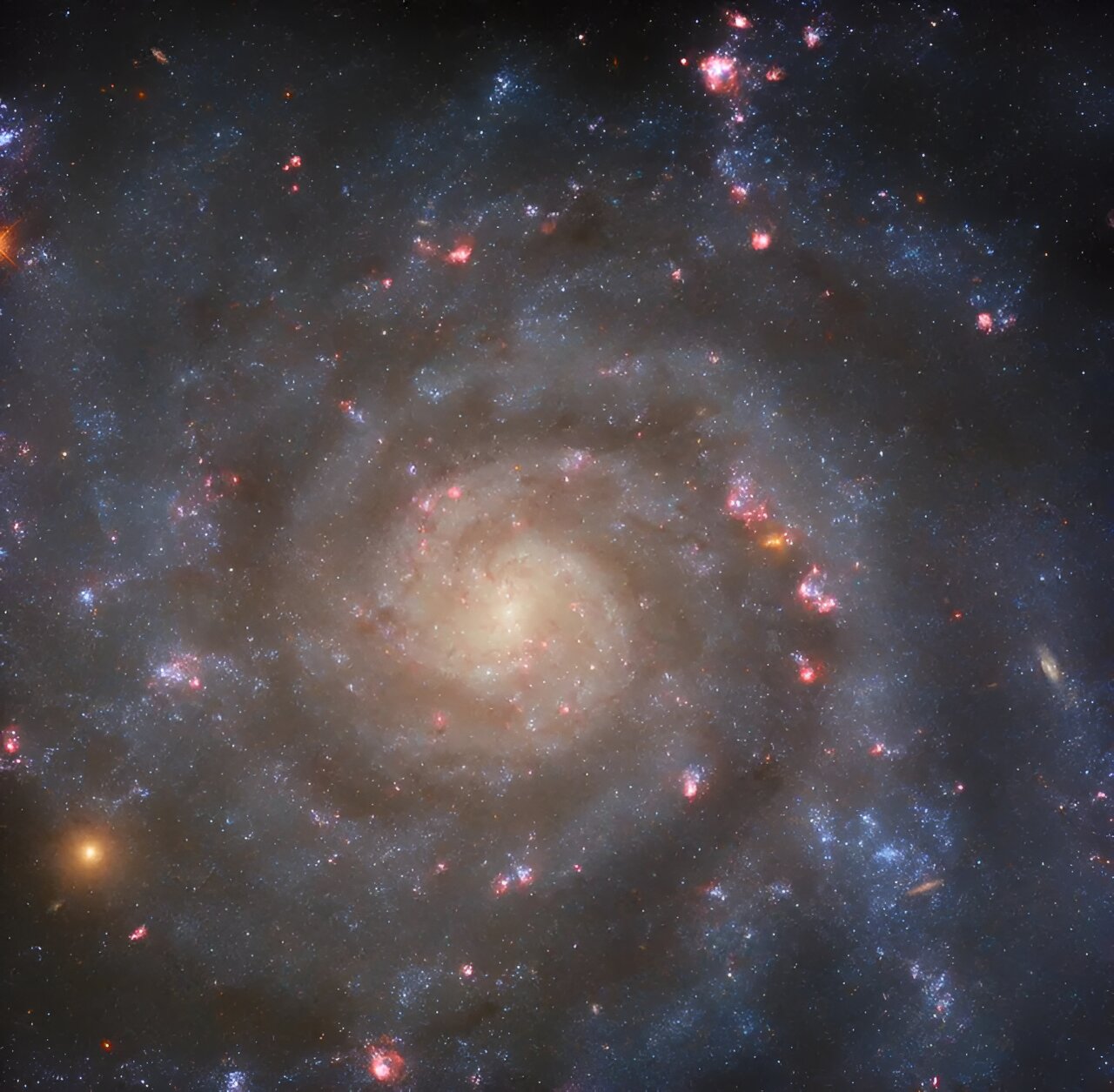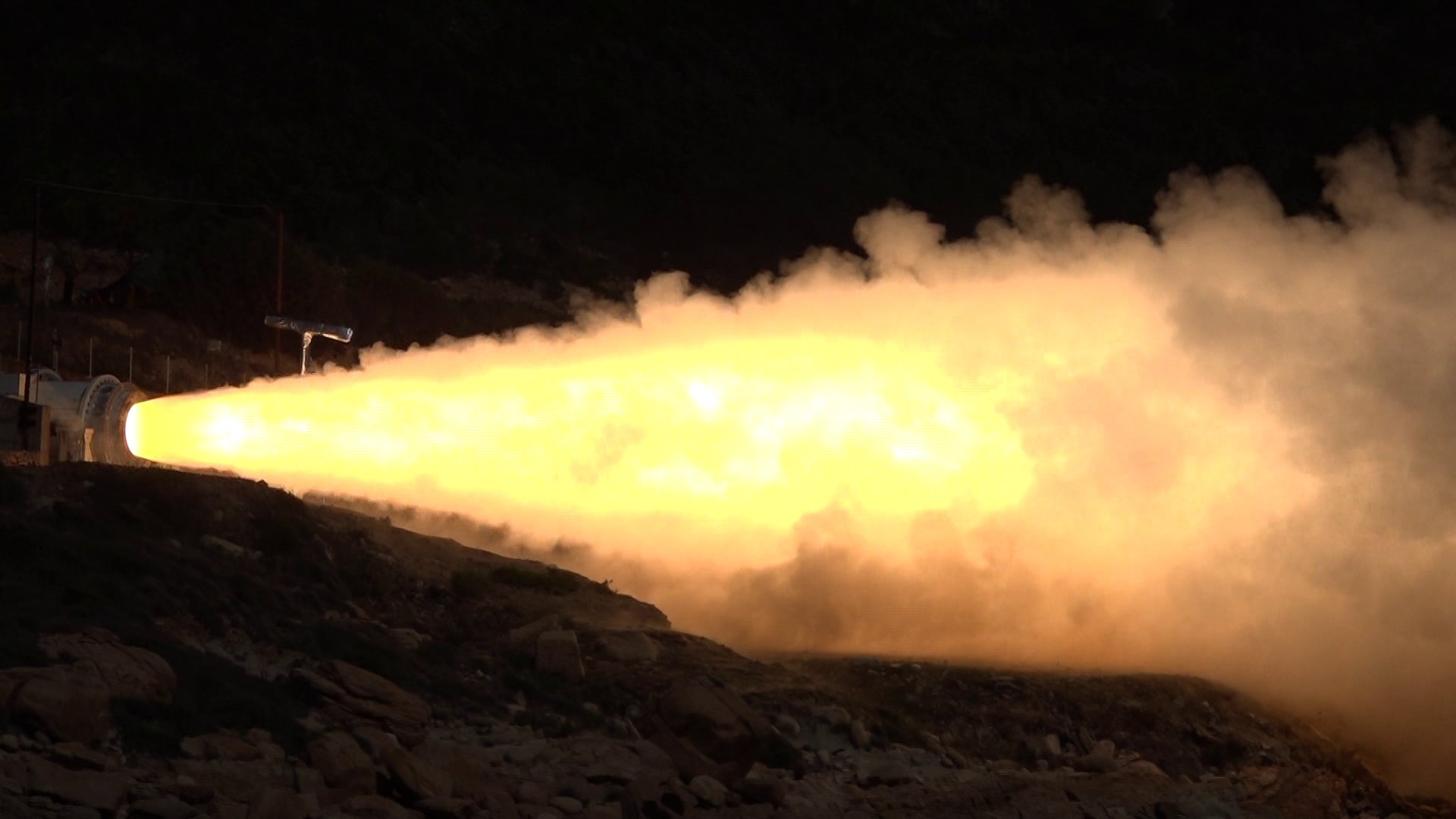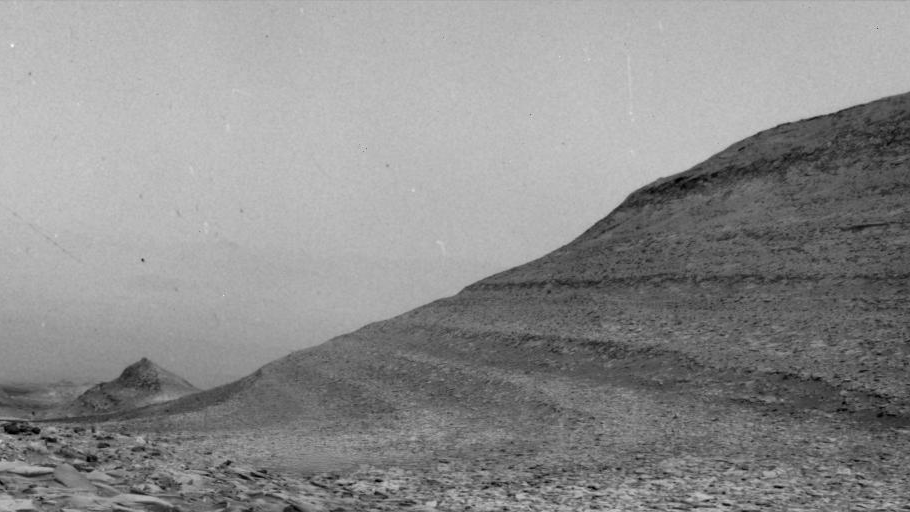This glittering image from the NASA/ESA Hubble Space Telescope shows the spiral galaxy IC 5332. The galaxy lies about 30 million light-years away in the constellation Sculptor and has an almost face-on orientation to Earth. To understand the term “face-on,” it is helpful to visualize a spiral galaxy as an extremely large disk. If the galaxy’s orientation makes it appear circular and disk-shaped from our perspective on Earth, then we say that it is “face-on.”
In contrast, if the galaxy’s orientation is such that it appears squashed and oval-shaped, then we say that it is “edge-on.” The key thing is that the same galaxy would look extremely different from our perspective depending on whether it was face-on or edge-on as seen from Earth.
IC 5332 is an SABc-type galaxy in the De Vaucouleurs system of galaxy classification. The “S” identifies it as a spiral galaxy, which it clearly is, given its well-defined arms of bright stars and darker dust that curl outwards from the galaxy’s dense and bright core.
The “AB” designation is a little more complex. It means that the galaxy is weakly barred, which refers to the shape of the galaxy’s center. The majority of spiral galaxies do not spiral out from a single point, but rather from an elongated bar-type structure. SAB galaxies—which are also known as intermediate spiral galaxies—do not have a clear bar-shape at their core, but also do not spiral out from a single point, instead falling somewhere in between.
The lowercase “c” describes how tightly wound the spiral arms are: “a” would indicate very tightly wound, and “d” very loosely wound. Thus, IC 5332 is an intermediate spiral galaxy on many fronts: weakly barred, with quite loosely wound arms, and almost completely face-on.
Citation:
Hubble captures spiral galaxy IC 5332 face-on (2023, October 23)
retrieved 25 October 2023
from
This document is subject to copyright. Apart from any fair dealing for the purpose of private study or research, no
part may be reproduced without the written permission. The content is provided for information purposes only.




